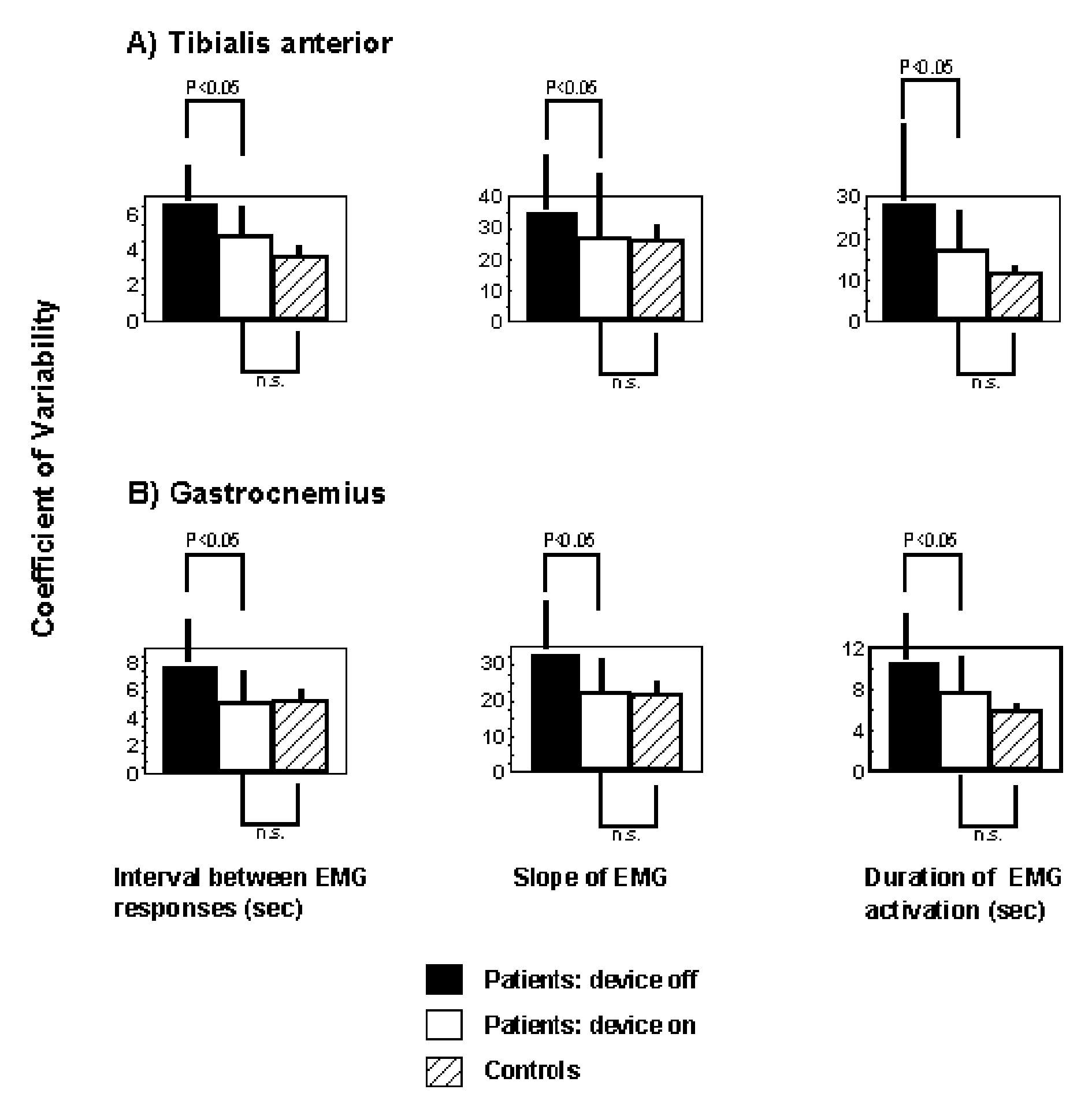Parkinson’s disease (PD) is the most common disorder of the basal ganglia. Patients characteristically exhibit tremor at rest, muscle rigidity, limited initiation of movements and slowness in performing complex voluntary movements. In addition to the typical neurochemical deficits, abnormal motor performance in PD results from impaired motor programming, with functional alterations of the supplementary motor area and pre-motor cortex, resulting in a failure of the internal rhythm formation process. It has been suggested that sequential movements in Parkinsonian patients might be improved by the effects of external rhythmic cues, either visual or acoustic, acting as a sort of timekeeper.
In line with that idea, we have developed a portable system which allows the patient suffering from bradykinesia and rigidity to initiate appropriate auditory stimulation when he/she is unable to move. Here we present data from six PD patients studied by means of surface electromyography while walking . They walked along an 8.5 m walkway, turned 180 deg at the walkway end and returned to the starting position. The electromyographic activities (EMG) of two leg muscles (tibialis anterior and gastrocnemius) were recorded by mean of surface electrodes. We studied the following temporal parameters: interval between burst of EMG activity, slope of each burst and its duration. We have used the coefficient of variability as an indicator for temporal stability (CV = standard deviation/mean X 100). In control trials, no external auditory cues were available. In test trials, the patients were asked to proceed in the presence of an external rhythm (click tone) at a fixed frequency of 100 clicks min-1, a standard value for a normal elderly human walk cadence. The tone was delivered by a device constructed in-house (comprising a battery-operated metronome and small headphones), which was controlled by the patient. We compared the performance during the task with and without stimulation using the Mann-Whitney U and Wilcoxon tests for a P ²le³ 0.05. Informed consent for participation was obtained from all individuals and protocol procedures were reviewed and approved by the University of Coruña Ethical Board and were in accordance with The Declaration of Helsinki.
All patients showed remarkable improvement in the EMG parameters studied while using the device. With acoustic stimulation, the coefficient of variability improved for each of the parameters (see Fig. 1), which reached values very close to those recorded for control subjects (for which stimulation and control situations were not statistically different). The results are consistent with prior reports on rhythmic auditory facilitation in Parkinson’s disease gait, and we suggest that this represents a novel and inexpensive tool to help PD sufferers in daily motor performance.
This work was supported by XUGA (PGDIT), Spain.

